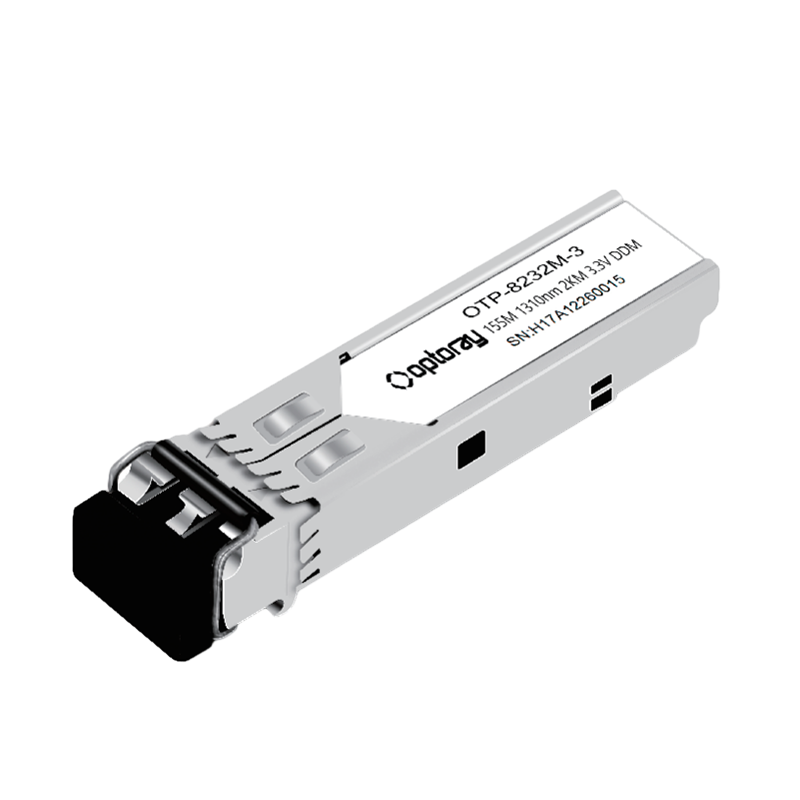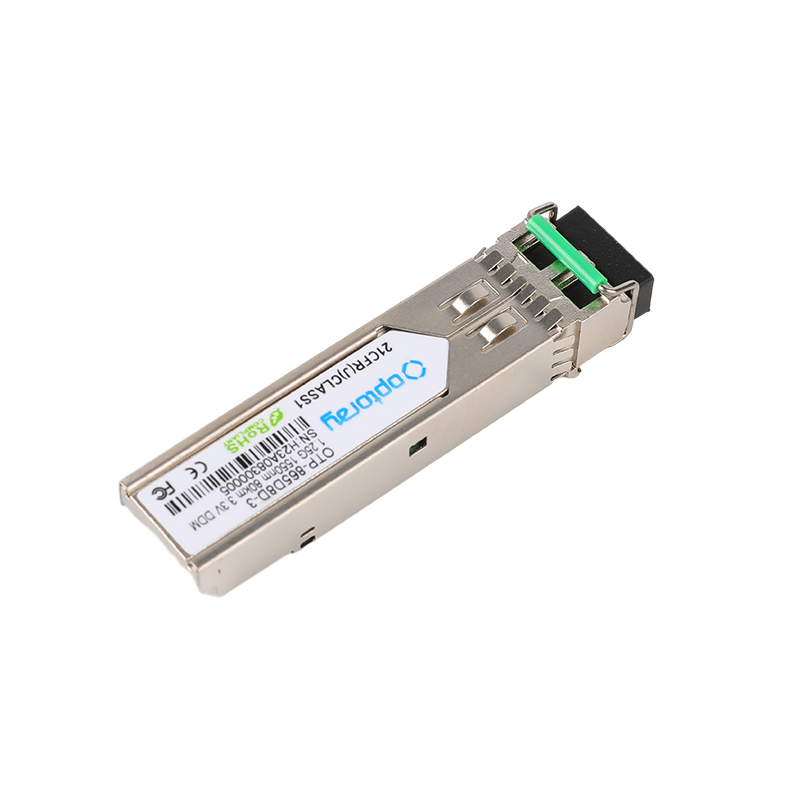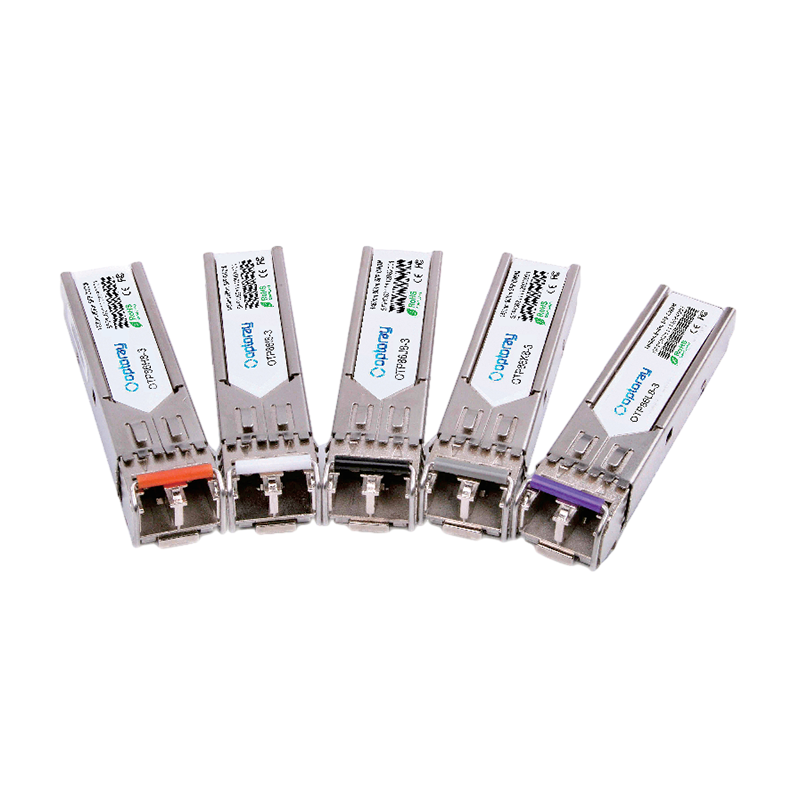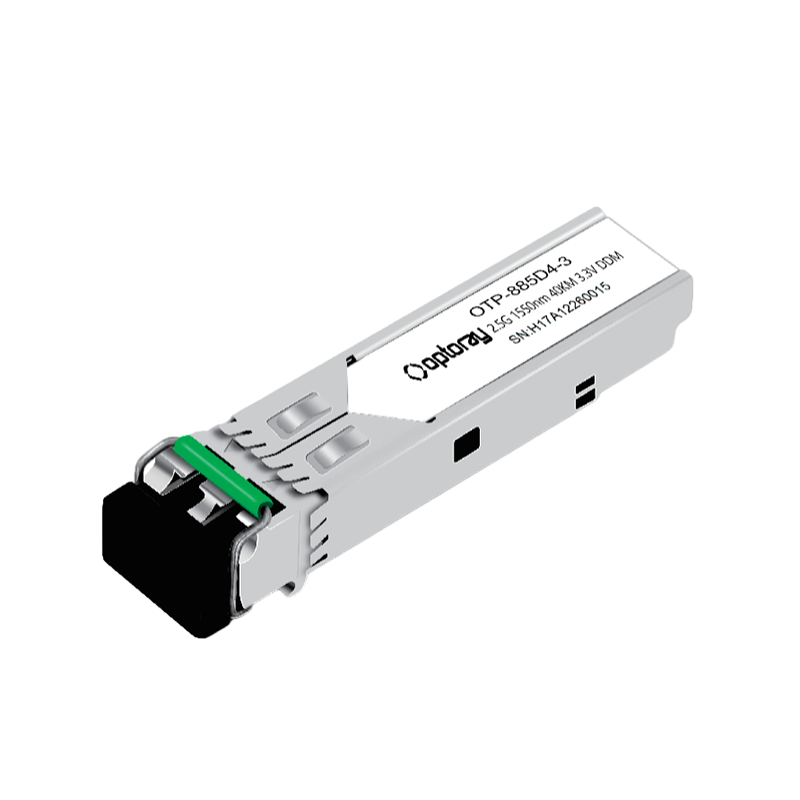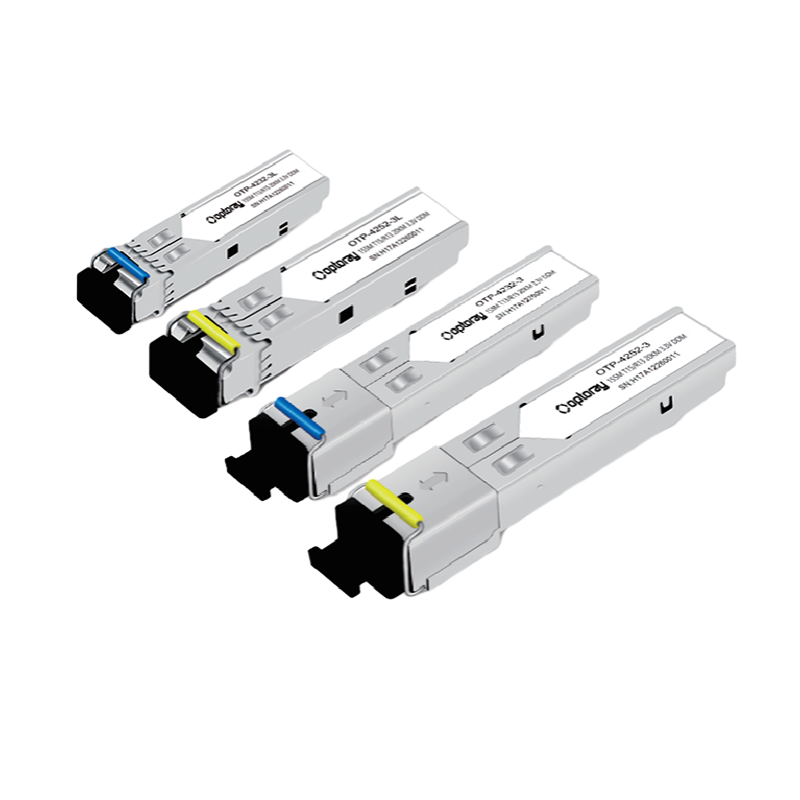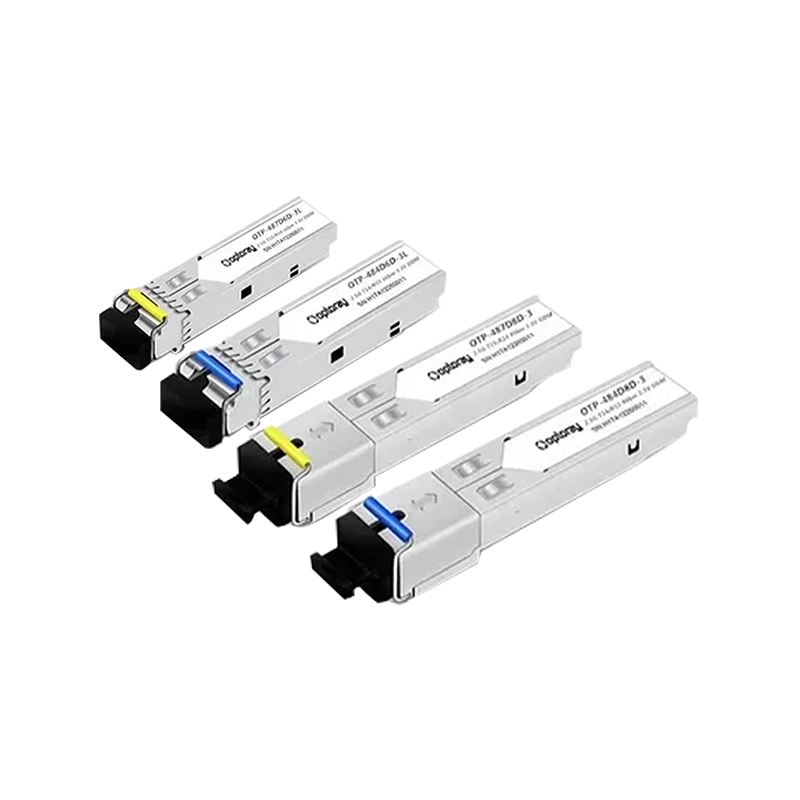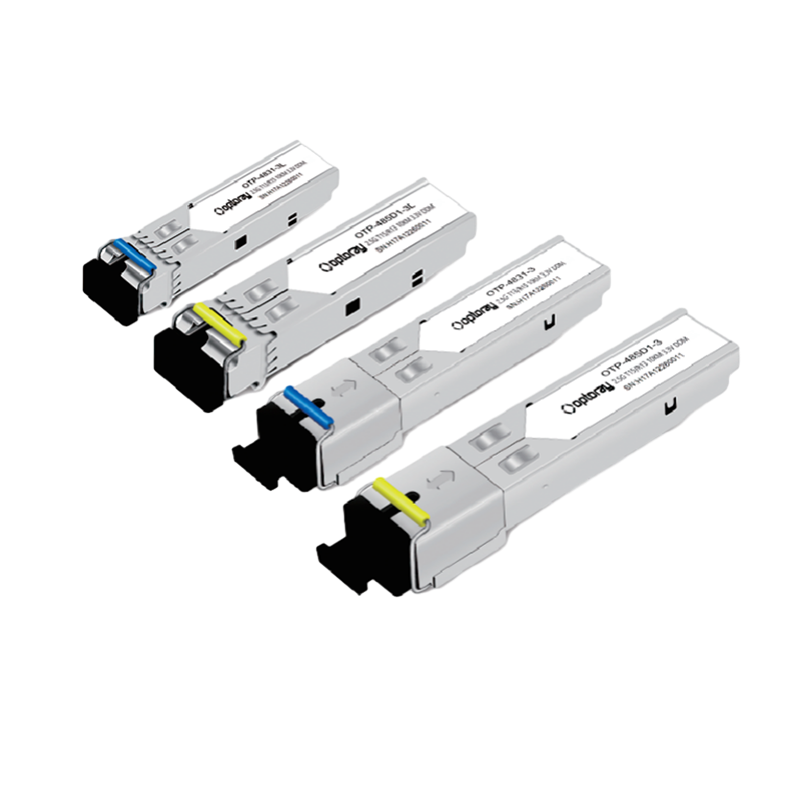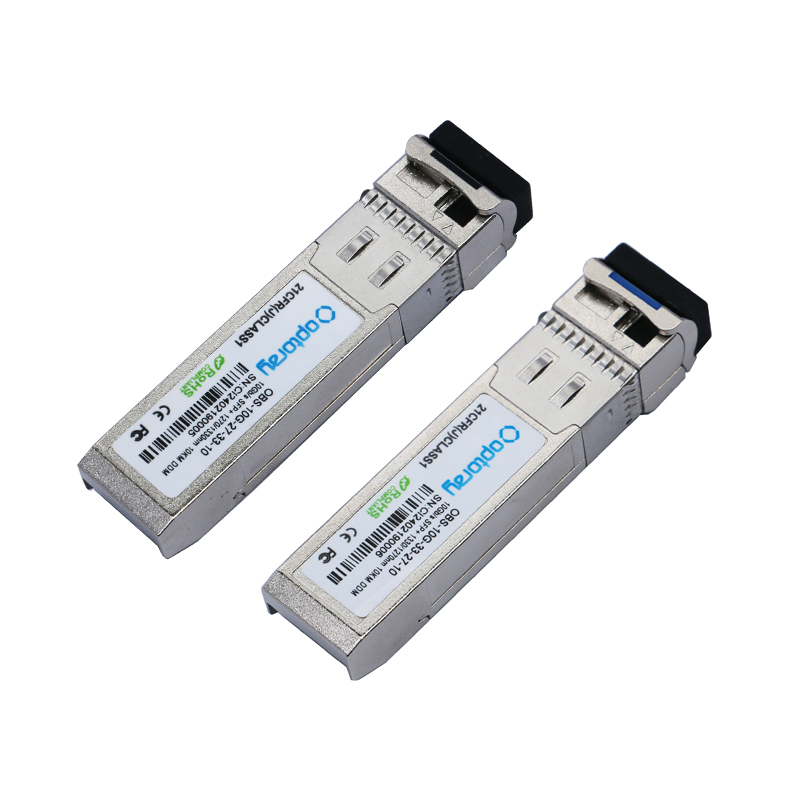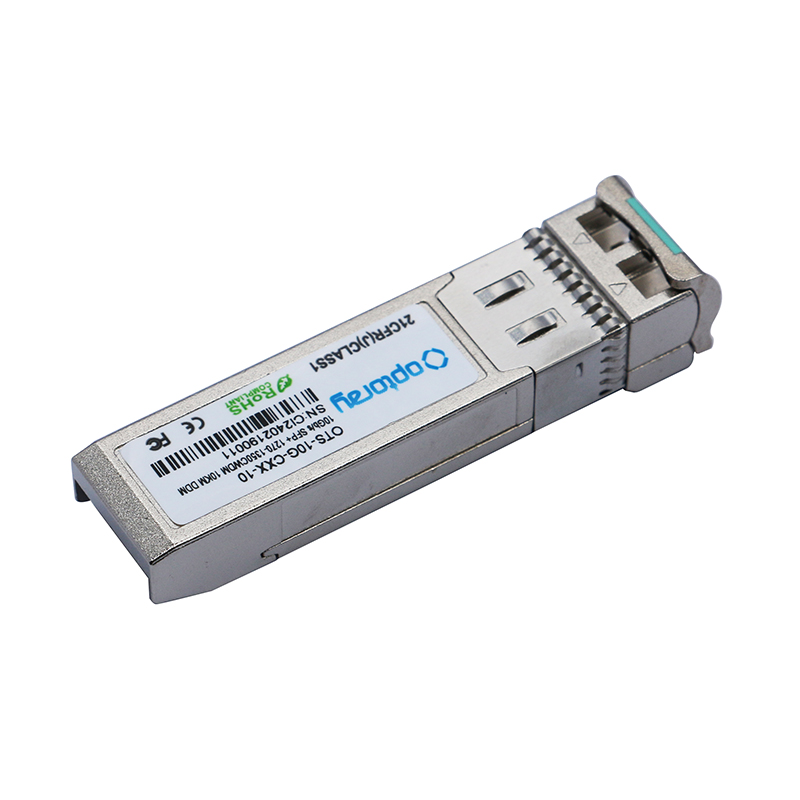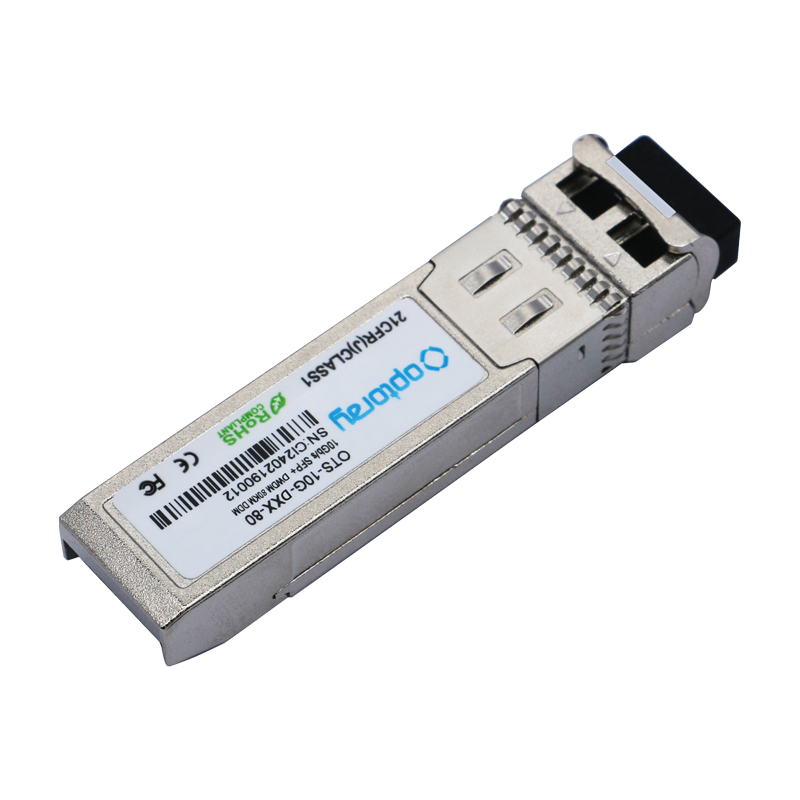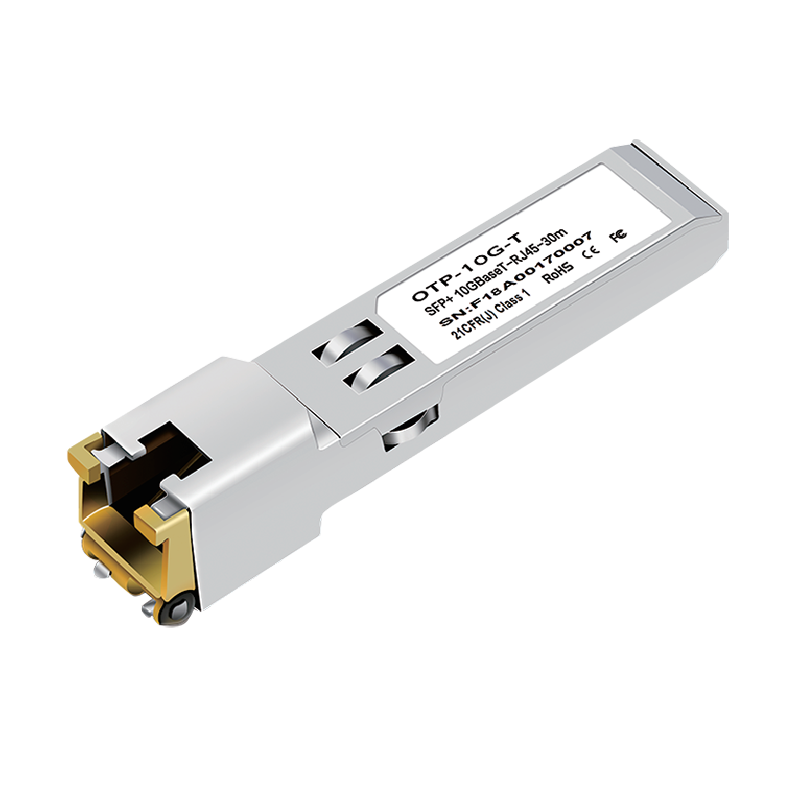+86-0559-5290604
SFP: From Basic Principles to Application Scenarios
What is SFP?
SFP, or Small Form-factor Pluggable, is a compact, hot-pluggable optical transceiver module widely used in modern networking equipment. The primary purpose of SFP modules is to provide flexible network interfaces, allowing network devices to quickly switch fiber types or transmission speeds without replacing the entire device. With the growth of data centers, enterprise networks, and telecom communications, SFP has become a key component connecting switches, routers, servers, and fiber networks. In traditional networking equipment, different fiber types or transmission rates usually require fixed interfaces, making upgrades or expansions inconvenient. The pluggable design of SFP modules allows for easy replacement and upgrades while supporting multiple fiber types, transmission rates, and distances. This flexibility makes SFP indispensable in modern network construction.
SFP Module Principles
Internal Structure of SFP Modules
An SFP module mainly consists of an optical-electrical converter, a transmitter, a receiver, and a control chip. The optical-electrical converter converts electrical signals into optical signals and vice versa, which is the core function of SFP modules. The transmitter sends data through fiber in the form of light signals, while the receiver converts incoming light signals back into electrical signals for network devices. The control chip manages communication between the module and the device, monitors performance, and adjusts operational parameters. For example, it can monitor temperature, voltage, and signal quality in real time, ensuring optimal module operation. Modern SFP modules also support Digital Diagnostic Monitoring (DDM), allowing administrators to remotely monitor transmission performance and module status.
How SFP Performs Optical-Electrical Conversion
The core function of SFP is optical-electrical conversion. At the transmitting end, a laser diode converts electrical signals into optical signals, which travel through fiber to the receiving end. The receiver converts these optical signals back into electrical signals for processing. During this process, the module ensures signal integrity and stability to avoid data loss or transmission delays. Different SFP modules implement optical-electrical conversion differently. Short-range SFP modules usually use Vertical-Cavity Surface-Emitting Lasers (VCSEL), which are cost-effective and energy-efficient. Long-range SFP modules often use Distributed Feedback (DFB) lasers, which support greater distances with lower signal attenuation.
Working Principle of SFP Modules
The operation of an SFP module can be summarized in the following steps: 1. The network device outputs an electrical signal to the SFP transmitter. 2. The transmitter’s laser converts the electrical signal into an optical signal and sends it through fiber. 3. The optical signal travels through the fiber to the receiver. 4. The receiver converts the optical signal back into an electrical signal for the network device. 5. The control chip monitors module status and provides performance data via digital diagnostics. High-quality SFP modules achieve low latency, low error rates, and reliable transmission even in complex network environments and varying temperatures.

SFP Fiber Interface Types
Common SFP Interface Types
Choosing the right fiber interface is crucial. Common SFP interfaces include LC and SC connectors: - LC connector: Small form factor, suitable for high-density networks, commonly used in data centers and enterprise LANs. - SC connector: Larger but more stable, suitable for industrial networks and long-distance transmission. Other interfaces, such as MT-RJ and MU, are used in specialized industrial or high-density scenarios. Connector compatibility and insertion durability are important factors when selecting an SFP module.
Impact of Interface Choice on Network Transmission
Fiber interface types affect both physical compatibility and network performance. LC connectors are compact and ideal for high-density wiring but are sensitive to tight bends, which may increase signal attenuation. SC connectors offer stable connections but occupy more space. Selecting an interface requires considering network scale, wiring density, and future expansion needs. Different connector types also have varying installation and maintenance requirements, affecting operational efficiency.
Compatibility and Standards
SFP modules follow international standards to ensure interoperability across vendors. Common standards include the IEEE 802.3 series, covering Ethernet speeds, fiber types, and connector specifications. Using standard-compliant SFP modules ensures stable communication between devices and prevents network downtime caused by incompatible connectors.
SFP Transmission Distance Analysis
Transmission Distances Supported by Different SFP Modules
SFP modules support varying transmission distances depending on fiber type and laser. Short-range SFPs typically cover several hundred meters to a few kilometers, suitable for internal connections in enterprise networks and data centers. Long-range SFPs can span tens to hundreds of kilometers, ideal for telecom and intercity networks.
Factors Affecting Transmission Distance
Transmission distance is influenced by fiber type, optical attenuation, environmental temperature, connector quality, and module performance. Single-mode fiber supports long-distance transmission but requires precise module performance. Multi-mode fiber is cost-effective for short distances but has higher attenuation. Environmental factors like temperature can affect laser performance and signal strength.
Choosing the Appropriate Transmission Distance
Selecting an SFP module depends on network topology, wiring environment, and transmission requirements. Short-range, multi-mode SFPs are economical for data center internal connections. Single-mode, long-range SFPs are required for intercity links, and fiber quality and connector compatibility must be considered to ensure stable transmission.
SFP Application Scenarios
Data Center Networks
In modern data centers, SFP modules are essential for high-speed, stable, and flexible network connections. Data centers often have hundreds or thousands of servers requiring high-volume data transfer. SFP modules allow administrators to flexibly configure fiber type and speed according to device needs, enabling scalable and high-density networking. Hot-pluggable SFP modules also allow efficient maintenance and upgrades. When a server requires a fiber or speed upgrade, the SFP module can be replaced without downtime, enhancing operational efficiency.
Enterprise LANs
Enterprise networks involve multiple switches, routers, and end devices requiring stable LAN communication. SFP modules enable flexible fiber expansion and high-performance connections. For example, inter-building links, multi-floor office wiring, video conferencing, or large file transfers can be optimized using different SFP modules. Choosing the right SFP module also reduces cabling costs. Short-range, multi-mode SFPs suit intra-floor connections, while single-mode, long-range SFPs suit cross-building or campus links.
Telecom Operators and Long-Distance Communication
Telecom networks and metropolitan area networks rely heavily on SFP modules. Fiber networks covering cities or regions require modules with high precision, stability, and low optical loss. Single-mode, long-range SFPs combined with high-quality fiber enable stable transmission over tens or hundreds of kilometers. Standardized interfaces and hot-pluggable design allow network expansion or upgrades without replacing existing equipment, meeting increasing bandwidth demand efficiently.
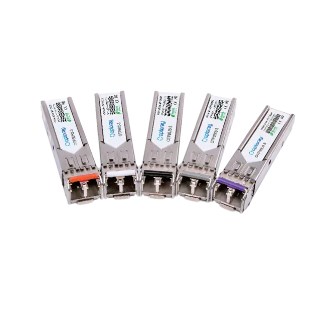
Industrial Automation and Smart Device Applications
With Industry 4.0 and smart manufacturing, industrial devices demand highly reliable and real-time networks. SFP modules connect PLCs, robotic control systems, monitoring networks, and sensors. Industrial-grade SFP modules withstand high temperatures, dust, and electromagnetic interference. Some support extended temperature ranges and vibration resistance, ensuring reliable transmission in harsh environments.
SFP Performance Optimization and Considerations
Improving Transmission Efficiency
To maximize SFP performance: - **Choose the appropriate fiber type** based on distance and speed requirements. - **Optimize wiring layout** to avoid tight bends and maintain signal integrity. - **Monitor module status** via digital diagnostics to detect anomalies. - **Ensure interface compatibility** with network equipment to prevent performance drops.
Common Issues and Troubleshooting
Common SFP issues include: - **Signal loss or packet drop**: Caused by bent fibers, dirty connectors, or aged modules. Clean or replace as needed. - **Device fails to recognize module**: Check interface type and speed compatibility. - **Temperature anomalies or overheating**: Improve cooling or use industrial-grade modules. Systematic troubleshooting and regular maintenance reduce failure rates and ensure long-term stable operation.
Best Practices for Using SFP
Use standard-compliant modules: IEEE or internationally certified SFPs ensure compatibility and stability. - **Plan network upgrades**: Reserve slots and interfaces to reduce future expansion costs. - **Clean and inspect fiber connectors regularly**: Prevent dust or contamination from affecting signal quality. - **Manage module inventory**: Replace aging modules promptly to maintain network continuity.
Conclusion
SFP modules are indispensable in modern networking due to their flexibility, compatibility, and performance optimization capabilities. They are widely used in data centers, enterprise LANs, telecom networks, and industrial automation. Understanding SFP principles, fiber interface types, transmission distances, and application scenarios enables network engineers to select and optimize solutions effectively. As networking technology evolves and data demands increase, SFP modules will continue to play a critical role in providing high-speed, reliable, and scalable connections. Mastering their usage, performance optimization, and maintenance ensures enterprises and operators achieve efficient and stable network transmission.



 English
English русский
русский


